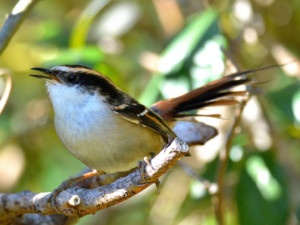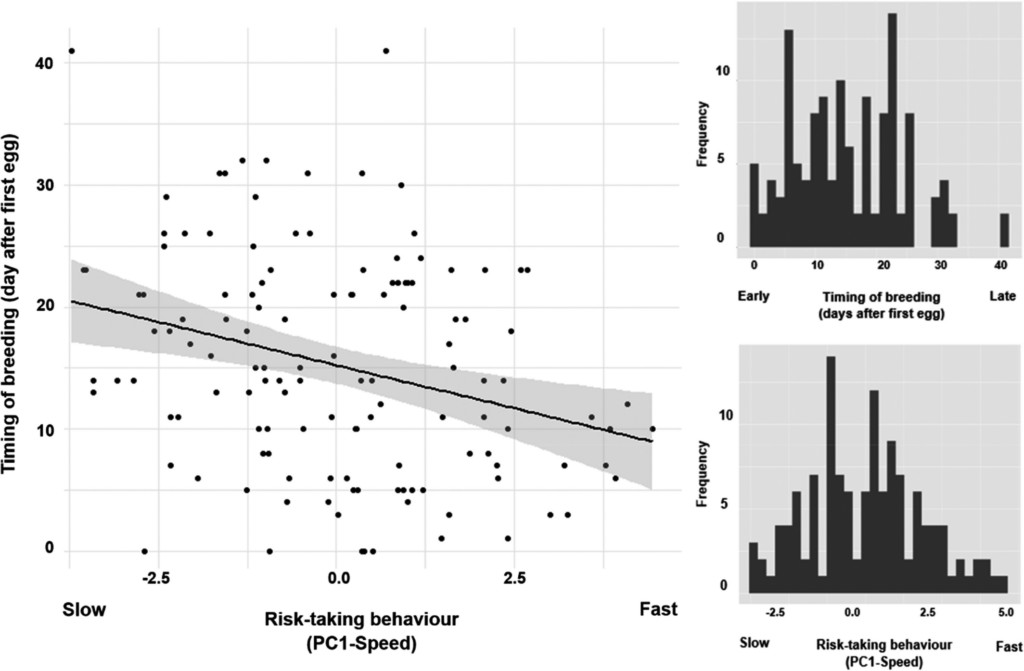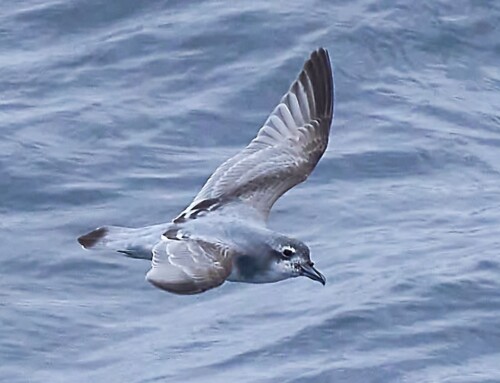 LINKED PAPER
LINKED PAPER
Risk-taking behaviour relates to timing of breeding in a sub-Antarctic rainforest bird. Poblete, Y., Botero‐Delgadillo, E., Espíndola‐Hernández, P., & Vásquez, R. A. 2021. IBIS. DOI: 10.1111/ibi.12941. VIEW
Imagine your are a small songbird on an island. The breeding season is about to start and you have to make an important decision. You could start building your nest early, so you have a head start on your competitors. However, breeding early can be risky due to low temperatures, heavy storms and potentially less food at the onset of spring. Perhaps it is better to wait for safer and more stable conditions. What would you do? Your answer to this question might reflect your personality (if you were a bird). Research suggests that risk-taking individuals tend to be early breeders, whereas shy individuals postpone the start of their breeding (McNamara et al. 1998). A recent study tested this idea in the Thorn-tailed Rayadito (Aphrastura spinicauda), a small songbird that breeds on the Navarino island in southern Chile.
Experiment
Yanina Poblete and her colleagues monitored the breeding behavior of 90 individuals and assessed their personality with an experiment. Using a field-portable aviary, the researchers determined how quickly and thoroughly a bird explored its new environment. The behavior of the birds, such as number of flights and number of perching locations visited, was summarized in an activity score. Statistical analyses revealed that birds with the highest activity scores (i.e. the risk-takers) started breeding earlier than birds with lower activity scores. These findings support the idea that risk-taking individuals tend to be early breeders.

Figure 1.The negative relationship between timing of breeding and risk-taking behaviour indicates that risk-prone individuals breed earlier in the Thorn-tailed Rayadito. The histograms on the right show the distribution of the data.
Reproduction
But does breeding earlier also confer any benefits? To answer this question, the researchers correlated the timing of breeding with several reproductive parameters, namely clutch size, fledging success and offspring body condition. Studies on other bird species found that early breeders have larger clutches and produce offspring in better condition (Klomp 1970, Hodachka 1990). Moreover, risk-taking individuals often have a higher reproductive success (Smith & Blumstein 2008). In the case of the Thorn-tailed Rayadito, however, the researchers did not detect any relationship between timing of breeding and reproductive output. Early breeding might not have any direct reproductive benefits for this particular species, but could be related to competition for nesting sites with other species on the island, such as House Wrens (Troglodytes aedon) and Chilean Swallows (Tachycineta meyeni). An interesting idea that requires more research.
References
Hochachka, W.M. (1990). Seasonal decline in reproductive performance of song sparrows. Ecology 71: 1279– 1288. VIEW
Klomp, H. (1970). The determination of clutch-size in birds – a review. Ardea 58: 1– 124. VIEW
McNamara, J.M., Wlham, R.K. & Houston, A.I. (1998). The timing of migration within the context of an annual routine. Journal of Avian Biology 29: 416– 423. VIEW
Smith, B.R. & Blumstein, D.T. (2008). Fitness consequences of personality: a meta-analysis. Behavioral Ecology 19: 448– 455. VIEW
Image credits
Top right: Thorn-tailed Rayadito (Aphrastura spinicauda) | Gabriel Barrera Maffioletti | CC BY-SA 4.0 Wikimedia Commons
Blog posts express the views of the individual author(s) and not those of the BOU.
If you want to write about your research in #theBOUblog, then please see here





